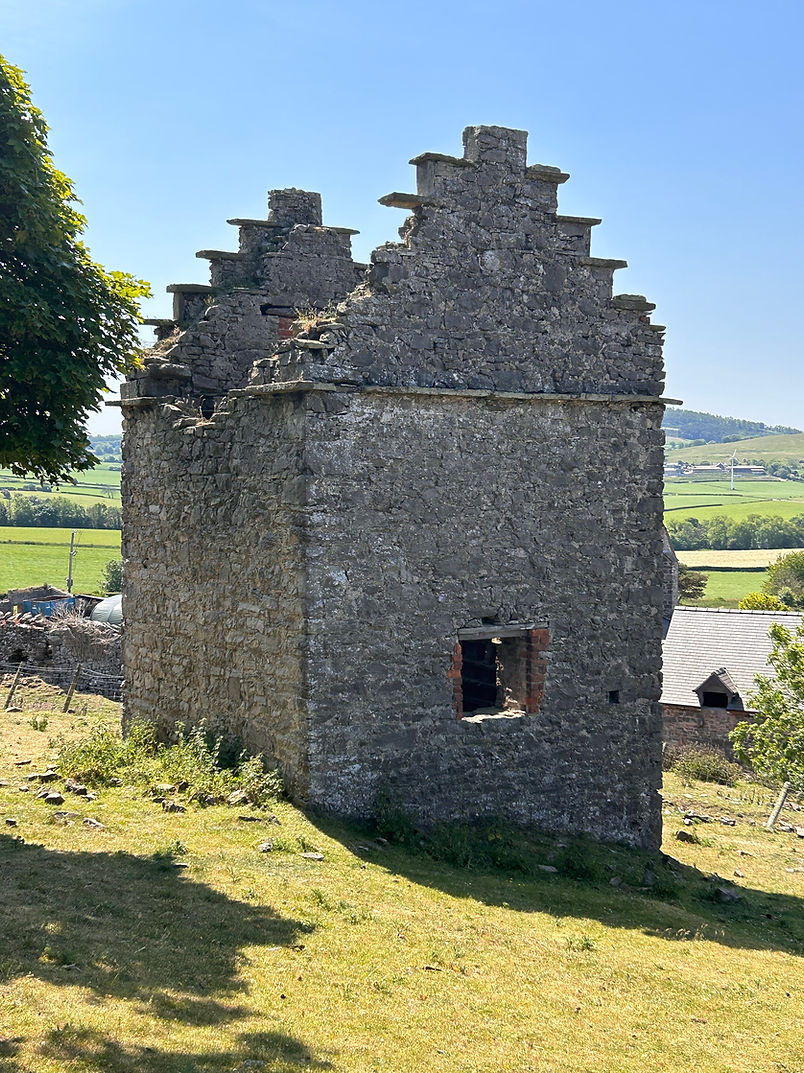
Dovecotes are always a pleasure to find - quirky and curious, raised in all manner of shapes and sizes. It’s likely that if you come across one in the wild today, you are seeing a modern affair - ornamental and pretty. But while the dovecotes of old could be comely enough, they were first and foremost functional, built to provide meat, eggs, feathers and even fertiliser.
It is believed that dovecotes came to Britain with the Normans, and the earliest remains of a dovecote here date from the 12th century, at Raunds in Northamptonshire. They were the purvey of the rich and powerful, at least until the 16th century, and virtually all of the few medieval examples remaining are to be found upon the lands of manors and monasteries, and within the confines of castles. Pigeon was considered a delicacy - especially the ‘squabs’, the chicks gathered at about four weeks of age. Pigeon pie was very popular, indeed, and can be found in the domestic accounts of the powerful.
It has been said that dovecotes were popular for providing a year round source of meat, but this is something of a myth, at least according to the research of McCann, whose work on the household accounts of the rich and influential has found that pigeon was eaten during the spring and summer - the winter months less so. Squabs born rarely in the winter could be sold for huge sums of money, such was the popularity of the meat. Eggs were also gathered for food, feathers for mattresses, while pigeon guano was considered an excellent fertiliser. It's worth noting that saltpetre was also discovered to be a component of pigeon guano, and as a consequence almost as valuable as silver in industrial quantities.

Gop Farm Dovecote dates to the first few years of the 17th century - probably around 1622, when the original farmhouse was built. It was during the later years of the 16th century when rules on owning dovecotes were eased, and many were built on farmsteads - including Gop Farm on the steep slopes beneath Y Gop, the largest cairn in Wales, the second largest in Britain. It is a rather wonderful building - simple and functional in form, but strangely beguiling, not least because of its position beneath the cairn and Neolithic cave.
It is a tall, square, rubble built building with larger quoins, giving it a sturdy appearance. The stepped gables are without the slate roof that it would have originally enjoyed. At the top of the east face, within the gable is a bricked up loft opening, through which the pigeons would have entered. A lintelled doorway leads into the dovecote and within can be found hundreds of nesting boxes stretching from the floor to the eaves - a simple window looks out to the west towards Ffynnon Wen.

The nesting boxes within the Gop Farm Dovecote extend from floor to eaves.
The fact that the nesting boxes rise from the floor to the eaves is actually an interesting means of dating the dovecote. With the arrival of brown rats in the middle of the 18th century, on the trading ships into the East coast of Britain, dovecotes became steadily infested. Black rats were less of a problem, since they were more selective with their food habits, smaller and less able to enter brick built dovecotes. The larger brown rat was a disaster for the dovecote, since not only were they larger and utterly voracious, but were able to gnaw through all manner of materials to get into the building, devastating the pigeon population within. A typical method of tackling the problem was to block up the first three to five feet of existing nest boxes dating from before the mid 1700s, and in the builds after that date, the walls have no nest boxes at the base of the wall. The dovecote at Gop Farm has open nest boxes to the floor, so managed either to avoid the plague of brown rats to a large extent, or had gone out of use by the mid 18th century.

Simple and functional - Gop Farm Dovecote is a little wonder.
Dovecotes began to fall out of favour with the advent of new agricultural methods, which made the availability of year round crops entirely possible. But it was also the demands of the Napoleonic War at the end of the 18th century and the beginning of the 19th century that caused the demise of the dovecote in huge numbers, as farmers were encouraged to turn over as much land as possible to crop development.
When the Gop Farm Dovecote fell out of use is not known, but it seems to have survived in situ largely because of its position upon a slope not entirely convenient for crops - it might have continued, then for some considerable time.
During the excavations of Gop Cave, a little further up the slope at the end of the 19th century, much of the human bone that was found was stored in the dovecote, turning the building into a sort of charnel house - a function to which it was eminently suited with its many nest boxes. Much of that material disappeared over the decades after, and what was lost was possibly removed from the dovecote and thrown down a nearby mine shaft by a disgruntled tenant.
Beautifully sited, the Gop Farm Dovecote is a delight, situated within a landscape of the very greatest antiquity.
Further Reading
A.O. Cooke, A Book of Dovecotes, London, (1920)
G. Lloyd, Flintshire Dovecotes, Flintshire Historical Society Publications Vol. 22, (1966)
Websites
J. McCann, The Truth about Dovecotes
Researching the History of Dovecotes, Researching Historic Buildings in the British Isles
R. Garden, The Brief History of Dovecotes: The Beauty and Practicality of Dovecotes over the past 1000 years!

